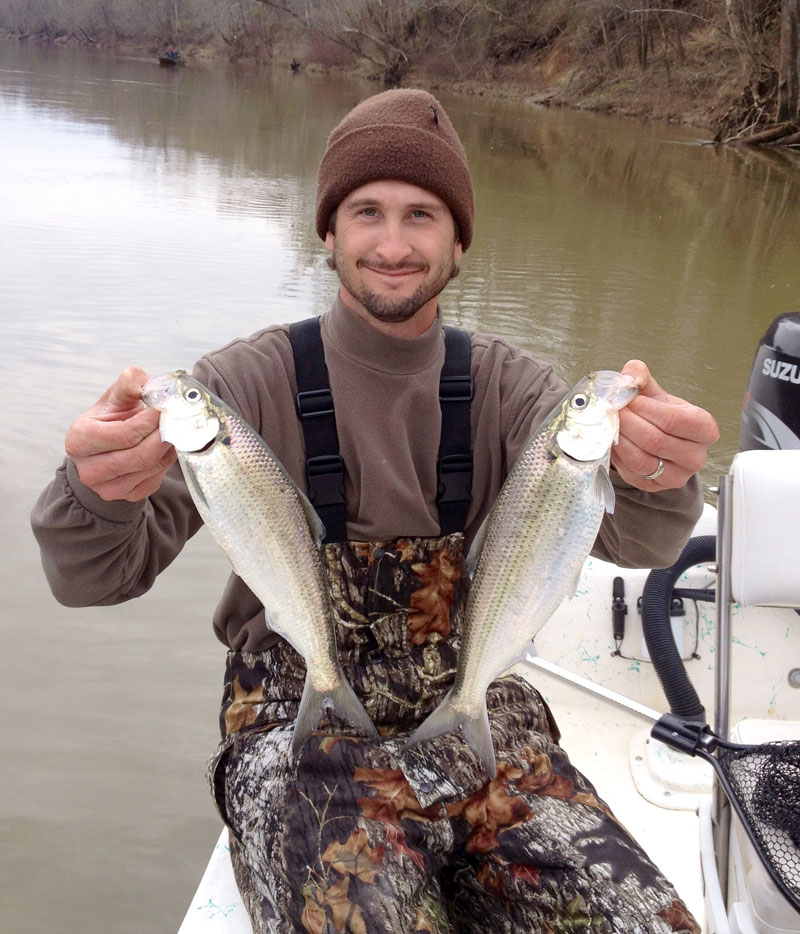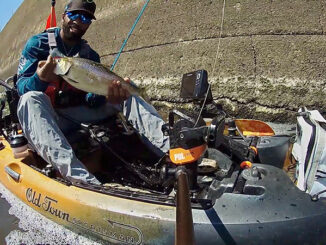
Catch more Roanoke River shad
Weldon is a special place on the Roanoke River for a lot of anglers. Although striped bass receive most of the fanfare, hickory shad will arrive a month earlier in March and offer some of the liveliest fishing of the year. Guide Greg Griffin of Apex, N.C. will be there for all the jumps, double hookups, and triple digit days with one of the most underrated sport fish around.
“In March, I’m keeping an eye on the water temperature,” said Griffin (919-434-4183), who runs Greggofish Guide Service. “I’m trying to find when it’s in the low 50s. That’s when they really get on the upper Roanoke near Weldon. That’s the hotspot. I have caught them as early as March 6, but last year it was the 20th before they were there in good numbers.”
Once Griffin is on location in Weldon, his focus is on the shorelines. Here, he’s looking for eddies or slower moving water where shad can rest on their upstream travels. These can be formed by bends in the river, laydowns, or any underwater obstruction that breaks up the normal flow of water. Griffin doesn’t sweat the depth of water, noting that hickories will reside in the top 2 to 4 feet of water regardless of how deep it is. At times, some of the larger rocks closer to the middle of the river will have shad bunched on their downstream side.
Double up
“Most anglers — including myself — will be using a double rig,” said Griffin. “The shad dart and spoon combination is a very popular rig. But I’ve had so much success with the Shineee Hineee jigs that I don’t usually use them. It’s a hair jig with a foil trailer and a sickle hook that is less likely to be thrown when they jump. I’ll use the 1/16 or 1/8-ounce size. They make them in a lot of colors, but my favorite is the orange head, silver foil body, and chartreuse bucktail. It’s just unbelievable the way it outfishes other baits. A lot of anglers will use 1½- to 2-inch curly tail grubs on jigheads in a variety of colors and a Nungesser spoon tied in the back. I tie my rig with a dropper loop for one jig and then another jig tied about 18 inches behind.
“They usually want it just below the surface. So you’re basically making a quartering cast upstream and letting the rig just disappear before starting your retrieve. If the water is high and the current is strong, I’ll add a split shot or two about a foot above the rig to get it down a little faster. When you see them start to flash on the bait, you know you’re doing it right.”





Be the first to comment